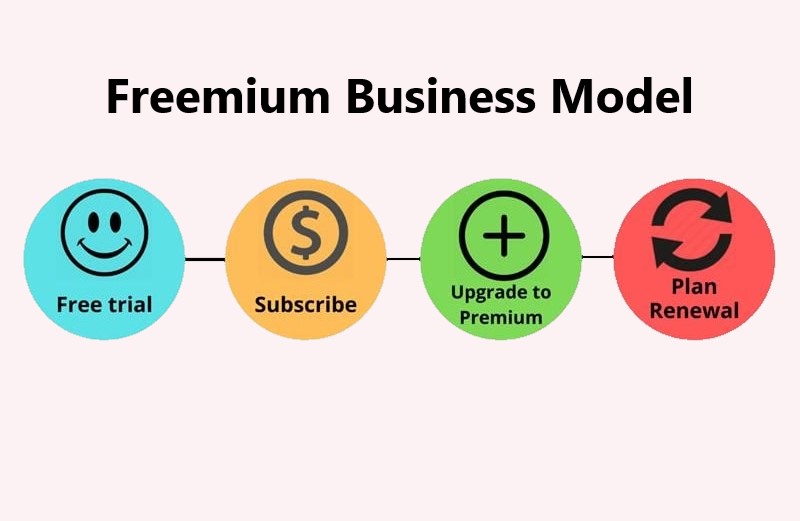 The Freemium Business Model has become a popular approach for companies aiming to grow their user base while generating revenue. By offering a product or service for free with the option to upgrade to a paid version, businesses can attract large numbers of users with minimal initial barriers. This model allows users to experience the product before deciding if premium features are worth the cost. Over time, companies can convert a portion of these free users into paying customers, creating a scalable and sustainable revenue stream. As more industries adopt this model, it continues to demonstrate its effectiveness in driving both growth and profitability.
The Freemium Business Model has become a popular approach for companies aiming to grow their user base while generating revenue. By offering a product or service for free with the option to upgrade to a paid version, businesses can attract large numbers of users with minimal initial barriers. This model allows users to experience the product before deciding if premium features are worth the cost. Over time, companies can convert a portion of these free users into paying customers, creating a scalable and sustainable revenue stream. As more industries adopt this model, it continues to demonstrate its effectiveness in driving both growth and profitability.
What is the Freemium Business Model?
The Freemium Business Model is a pricing strategy where companies offer a basic product for free while charging for premium features. This model attracts a large user base by removing the initial cost, allowing users to try the product without financial commitment. Over time, the goal is to convert free users into paying customers by offering premium features valuable enough to justify the upgrade.
The freemium model is based on two tiers: the free tier and the premium tier. The free tier provides limited access to showcase value but includes restrictions that encourage upgrades. The premium tier offers expanded features, such as more storage, advanced tools, or enhanced support, tailored to power users or businesses with specific needs.
This model is highly effective in markets where large-scale user acquisition is crucial. Offering a free version drives significant user growth, and with the right conversion strategies, companies can generate consistent revenue. However, it’s essential to balance free and premium features. If the free tier offers too much value, users may never feel the need to upgrade. Conversely, if it offers too little, users may disengage before considering an upgrade.
Advantages of the Freemium Model for Businesses
The Freemium Business Model offers significant advantages for businesses, particularly in terms of scalability and user acquisition. By providing a free version of a product, companies can reach a much larger audience than they would through a traditional paid model. This lower barrier to entry enables businesses to scale rapidly, as users are more likely to try a product that requires no initial financial commitment. The large user base generated by the free tier helps create network effects, increasing brand exposure and credibility in the market.
Additionally, the freemium model is highly effective in driving revenue through upselling and conversions. Once users experience the value of the free version, they are more inclined to upgrade to premium offerings for enhanced features or support. Businesses can strategically use the free tier to engage users and introduce premium options at key touchpoints. This approach allows companies to create a steady revenue stream from a percentage of their user base, without alienating those who prefer to stay on the free version.
Moreover, the Freemium Business Model encourages long-term engagement, fostering a relationship between the brand and the user. By keeping users in the ecosystem, even on the free tier, businesses increase the likelihood of eventual conversion. This model also allows companies to collect valuable user data, which can be used to refine marketing strategies and better target users with premium offers, ultimately boosting conversion rates.
Challenges and Risks of the Freemium Model
While the Freemium Business Model offers advantages, it also poses challenges and risks for businesses. One primary downside is low conversion rates. Many users may stick to the free tier without ever upgrading to the premium version, making it difficult for companies to generate sufficient revenue. Studies suggest that average freemium conversion rates range from 2% to 5%, leaving most users on the free version, which may not be sustainable long-term.
Another challenge businesses face with the Freemium Business Model is the cost of supporting a large base of free users. Even though these users don’t directly generate revenue, they still require customer support and infrastructure, which can strain resources. This cost of maintaining a free user base can outweigh benefits without careful management.
Additionally, businesses risk users staying on the free tier indefinitely, especially if the free version is too generous. If the free version meets their needs, users may have little reason to upgrade. This forces businesses into a balancing act: offering enough value to attract users but not so much that it discourages conversions. To address this challenge, ongoing optimization of both free and premium offerings is necessary to encourage upgrades.
Strategies for Successful Freemium Conversion
To succeed with the Freemium Business Model, businesses must implement strategies that encourage users to upgrade from free to paid tiers. One effective way to increase conversion rates is by focusing on providing a seamless user experience. This means allowing users to explore the free version while clearly understanding the value of premium features. Companies can guide users toward premium tiers with onboarding processes, tutorials, and clear upgrade prompts without overwhelming them.
Another crucial strategy is balancing free value and premium features. While the free tier should offer enough value to attract users, it should also leave them wanting more. Premium features must feel like a natural extension of the user’s journey, addressing specific pain points or enhancing their experience. Offering time-limited trials of premium features allows users to experience the added value firsthand, increasing the chances of an upgrade.
Optimizing the user journey through data-driven insights is key to boosting conversions. Analyzing user behavior helps identify when and why users upgrade. Companies that refine their messaging and offer targeted promotions when users hit free tier limits often see higher conversion rates. In the Freemium Business Model, continually improving these touchpoints keeps users engaged and increases the likelihood of upgrading to premium offerings.
Examples of Companies Using the Freemium Model
Several companies have used the Freemium Business Model to drive significant growth and profitability. Dropbox is a prime example. By offering users 2GB of free cloud storage, Dropbox attracted millions of early users. The free tier acted as a gateway, encouraging users to upgrade to premium plans as their storage needs increased. Dropbox’s success relied on delivering a valuable free experience. However, they gently push users toward paid plans when more capacity was required. This strategy helped Dropbox grow its user base rapidly and convert a significant portion to premium subscriptions.
Spotify is another example of freemium success. The music streaming giant allows users to listen for free with ads. However, they offer a premium, ad-free experience with offline playback and enhanced sound quality. Spotify’s Freemium Business Model has been essential for expanding its global user base. Many users start with the free version before realizing the benefits of upgrading to a premium subscription. Spotify strategically highlights the free tier’s limitations, such as ads and lower-quality audio, driving users to upgrade for a better experience.
Both Dropbox and Spotify show how the Freemium Business Model can scale businesses effectively. Their success comes from offering a free product with enough value to attract users while encouraging upgrades for enhanced experiences. Through strategic upselling, these companies have successfully converted free users into paying customers, ensuring long-term growth.
Conclusion
In conclusion, the Freemium Business Model is a powerful strategy for businesses aiming to scale quickly and acquire users affordably. Offering a valuable free tier helps companies attract a broad audience and build brand recognition. At the same time, businesses strategically encourage users to upgrade to paid versions. However, they must balance the value of the free version with the appeal of premium features to ensure conversions. Despite challenges like low conversion rates and high support costs, successful companies like Dropbox and Spotify show freemium’s long-term potential for revenue growth. When executed properly, the Freemium Business Model allows businesses to create sustainable growth while maintaining high levels of user engagement.


